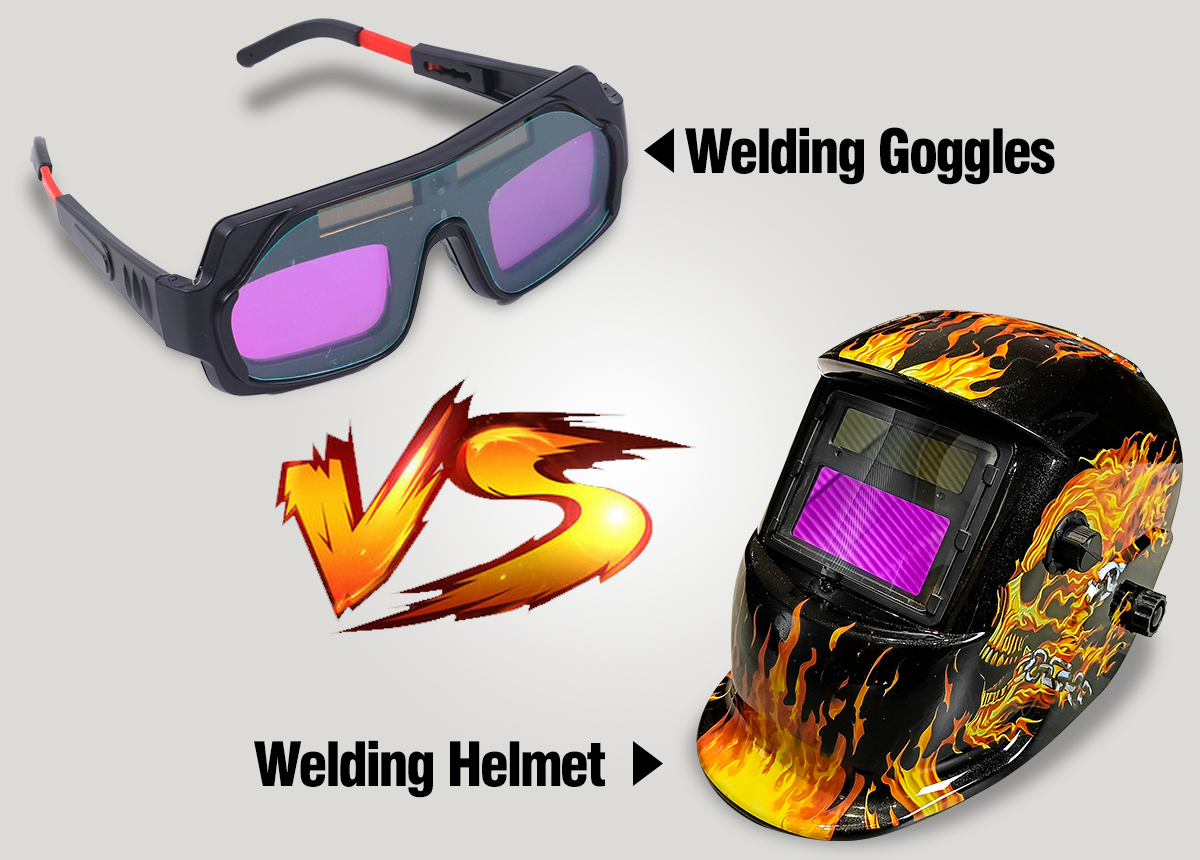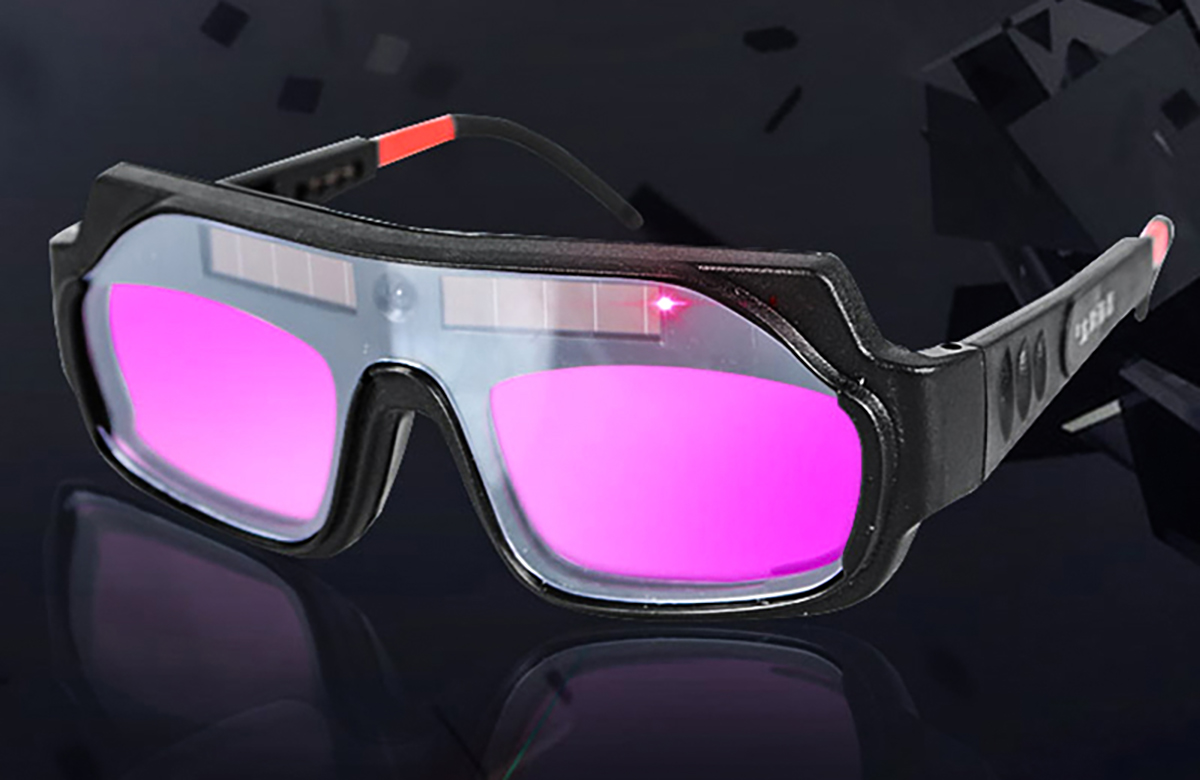Whether you're a professional welder or not, you need to protect your eyes and skin from harmful UV rays, heat, sparks, and radiation while welding.
The goggle and a helmet all have advantages and shortcomings.
While goggles are lighter and less cumbersome, they only offer protection for the eyes.
Helmets will protect your eyes and the rest of your face, but they are bulkier and more confining.

Goggles Overview
While welding working, the intense UV light, sparks, heat, radiation, and other debris can injure or permanently damage your eyes if you leave them exposed. Never make the mistake of thinking you could withstand the intense light with your naked eye. When left unprotected, eyes could develop photokeratitis, a painful condition that could take up to 48 hours to clear.
Welding goggles are similar in appearance to glasses but are thicker and tougher. The lenses of the goggles are specially designed with special material treatment filters, which can alleviate the stimulation of glare as much as possible without restricting the line of sight and prevent potentially harmful elements from touching your cornea.

Protection
Wearing goggles shields your eyes from the elements without hindering your visibility.
But they need to fit size properly if they are to provide adequate protection.
The right fit must extend from your eyebrows to the cheekbone, and it should cover both the front and the side of your eyes.
Visibility
Each goggle has filters to block harsh UV rays from reaching your eyes, and darker shades will provide different levels of visibility than lighter shades. Your choice of goggles will depend on the scene and tools of the welding application.
Convenience
Many welders prefer goggles because they are light and less cumbersome. Since they only cover the eyes, you never feel confined or restrained. You can move your head about as you like, and your visibility is not limited in any way. Of course, this freedom comes at the expense of exposing the rest of your face to intense UV light, heat, and radiation.
Whether freedom is worth the risk boils down to personal choice.
Helmets Overview
The purpose of using a welding helmet is not only to protect the eyes from glare but also to protect your face and neck.
Now welding helmets have auto-darkening properties based on new technology. They can automatically increase or lower their sensitivity and darken to a shade that will offer you the best protection. You can vary the amount of light required to switch to a darker shade freely.

Protection
Helmets provide better protection for welders than goggles. It protects the entire face from excessive UV rays, glare, heat sparks, and other debris. You no longer have to worry about photokeratitis, blindness, or skin cancer.
At the same time, helmets do not offer the same degrees of freedom as goggles.
Convenience
Although helmets will provide the best possible face protection, they are not the most comfortable of gear to wear. Compared to goggles, they are rather heavy and bulky. If you plan to weld for many hours, you are likely to experience fatigue.
Additionally, helmets can cause breathing difficulties and even suffocation. So people choose lighter goggles for this sole reason.
While goggles can also provide adequate protection for your eyes while welding, your face, neck and other parts of your body are still exposed to intense heat and radiation. Continued exposure can produce symptoms similar to sunburn. In extreme cases over a long period of time, you may develop skin cancer.
It's a choice between convenience and security. You either risk exposing your face to heat and radiation, or give up the freedom that only goggles can provide.
Of course, whenever choose a goggle or a helmet, you should better wear gloves, cuffless pants, a fireproof jacket, rubber-soled shoes, and earplugs to get better full-body protection.
If you need welding PPE, you can contact us at inwelt.
English
简体中文
العربية
Français
Русский
Español
Português
Deutsch
italiano
日本語
한국어
Nederlands
Tiếng Việt
ไทย
Polski
Türkçe
ភាសាខ្មែរ
Bahasa Melayu
Filipino
Bahasa Indonesia
magyar
Română
Čeština
Монгол
қазақ
Српски
हिन्दी
فارسی
Slovenčina
Slovenščina
Norsk
Svenska
українська
Ελληνικά
Suomi
Latine
Dansk
বাংলা
Hrvatski
Afrikaans
Gaeilge
Eesti keel
नेपाली
Oʻzbekcha
latviešu
Azərbaycan dili
Беларуская мова
Bosanski
Български
ქართული
Lietuvių













